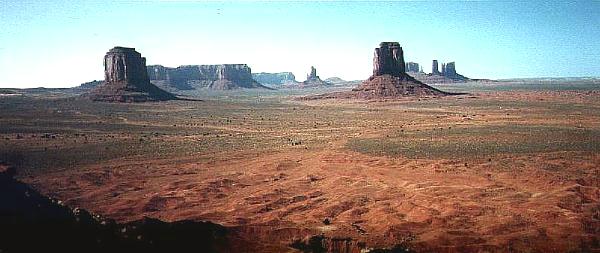
Detrended correspondence analysis
Lecture
graphics
- Detrended correspondence analysis (i.e., detrended reciprocal
averaging)
- developed in software form (DECORANA) in 1979
- published in a journal in 1980 (Hill & Gauch Vegetatio
42:47-58)
- Goals are to remove "arch" effect and compression of first-axis
ends
- Method:
- To get rid of "arch", divide axis 1 into several segments,
and adjust axis 2 to have a mean of 0 in each segment
- To calculate a third DCA axis, sample scores are detrended
w/ respect to the second axis as well as the first ... and
so on for higher axes
- Several authors (e.g., Pielou, ter Braak) have suggested
that DCA is "overzealous" in its removal of the "arch"
- A second method for eliminating the "arch" was suggested
in
1987 (ter Braak, C.F. Vegetatio 69:69-77)
- "Arch" reflects quadratic relationship between first
axis and second axis
- In addition to the constraint that axes be orthogonal,
merely add a second constraint: that axes be
uncorrelated w/ the square (cube, etc.) of previous
axes
- termed "detrending by polynomials", done w/ ter
Braak's (1987) canonical correspondence analysis
computer program, CANOCO
- The second goal of DCA is to "stretch" axis ends
- this causes distances in the ordination space to have
consistent meaning in terms of compositional
differences of samples, or distributional differences
of species
- DCA is currently popular w/ ecologists, esp. w/ nonlinear data
- The most common criticism of DCA is that detrending is
artificial
- problems ("arch", compression of axes) are "fixed" whether
they are real or not
- w/ field data, we don't know relationships between species
and quadrats
- Interpretation and presentation of ordination results (common
display options):
- Quadrat or species lists
- rank order of ordination scores may present a clear
gradient (e.g., moisture, successional status)
- Arranged matrix
- not very useful if
 2
gradients (still appears random)
2
gradients (still appears random)
- Quadrat and species ordination graphs
- if
 2 axes,
use a series of graphs (e.g., plot 1*2, 1*3)
2 axes,
use a series of graphs (e.g., plot 1*2, 1*3)
- Graph environmental parameters on quadrat ordination
- instead of plotting points for each quadrat, plot value
of some environmental variable (e.g., pH); isolines are
sometimes drawn
- Hybrid ordination
- allows various kinds of data to be plotted on one
figure
- however, since each "species" (incl. environmental
data) and quadrat affects the ordination, it may be
undesirable to include environmental data in ordination
- Trace diagram
- ordination score for one axis (usu. axis 1) and
environmental data, plotted by plot location
Previous
lectureNext lecture
 2
gradients (still appears random)
2
gradients (still appears random) 2 axes,
use a series of graphs (e.g., plot 1*2, 1*3)
2 axes,
use a series of graphs (e.g., plot 1*2, 1*3)